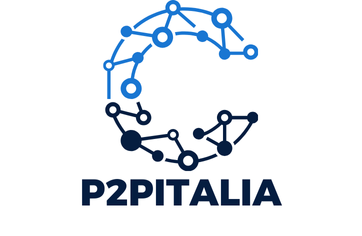In today’s digital age, businesses rely heavily on Kubernetes for deploying, scaling, and managing containerized applications. But with great reliance comes great responsibility—specifically, the need for an effective disaster recovery plan. Setting up a disaster recovery plan for a Kubernetes cluster in a multi-cloud environment is crucial to ensure business continuity. This article will guide you through creating a robust disaster recovery strategy to protect your data and keep your services running smoothly.
Understanding the Basics of Kubernetes Disaster Recovery
To set up a disaster recovery plan for a Kubernetes cluster in a multi-cloud environment, you first need to understand what disaster recovery means in this context. Kubernetes clusters are collections of nodes that run containerized applications managed by Kubernetes. A disaster recovery plan aims to protect these clusters from unexpected failures, ensuring minimal downtime and data loss.
Also to read : Top Strategies to Boost Your WordPress Site”s Security: Essential Techniques You Should Know
Recovery in a multi-cloud environment adds complexity but also brings significant benefits. By deploying clusters across multiple cloud providers, you enhance your system’s high availability and mitigate the risks of a single point of failure. However, the challenge lies in effectively orchestrating the backup and recovery processes across different environments.
Key Components of a Kubernetes Disaster Recovery Plan
- Backups: Regularly scheduled backups of persistent volumes, configuration data, and container images.
- Failover Systems: Mechanisms to switch to a secondary cluster if the primary one fails.
- Recovery Time Objectives (RTO): The maximum acceptable amount of time to restore services.
- Recovery Point Objectives (RPO): The maximum acceptable amount of data loss measured in time.
- Multi-cluster Management: Tools and strategies to manage multiple clusters across different cloud providers.
Creating Effective Backups in a Multi-Cloud Kubernetes Environment
Setting up reliable backups is the cornerstone of any disaster recovery plan. In a multi-cloud Kubernetes environment, this process involves several steps and best practices to ensure your data and services can be restored quickly.
In parallel : Mastering Mobile Messaging: A Comprehensive Guide to Implementing End-to-End Encryption
Scheduling Regular Backups
Backups should be automated and scheduled regularly to minimize data loss. Tools like Velero and Kasten K10 can help in automating backup processes and managing backups across different cloud providers. Make sure to back up:
- Persistent volumes: Storage volumes attached to your Kubernetes pods.
- Cluster configurations: YAML files, secrets, and config maps.
- Container images: Store these in a container registry that is accessible from all your cloud environments.
Storing Backups Securely
Your backup data should be stored in a secure and redundant manner. Utilize cloud storage solutions like Amazon S3, Google Cloud Storage, or Azure Blob Storage. Implement encryption both at rest and in transit to protect your data from unauthorized access.
Testing Backups
Regularly test your backup restore process to ensure that you can actually recover from a disaster scenario. Testing helps you identify potential issues and ensures that your team is familiar with the recovery process. It’s essential to document the steps and keep the documentation up to date.
Implementing Failover Systems and High Availability
Failover systems are crucial for maintaining service availability during a disaster. In a multi-cloud environment, you need to configure your clusters to ensure seamless failover from one cloud provider to another.
Setting Up Secondary Clusters
Deploy secondary clusters in different cloud regions or even on different cloud providers. Tools like Rancher or Karmada can help manage multiple clusters and automate the deployment process. The secondary clusters should be kept synchronized with the primary cluster to ensure they can take over when needed.
Load Balancing and Traffic Management
Use load balancers and traffic managers to distribute traffic across your clusters. Kubernetes provides internal load balancing capabilities, but you can enhance this with external solutions like NGINX, HAProxy, or Cloudflare. These tools help distribute traffic and reroute it in case of a cluster failure.
Health Checks and Monitoring
Implement health checks and monitoring systems to keep an eye on the health of your clusters. Tools like Prometheus and Grafana can provide insights and alerts, helping you respond quickly to any issues. Automated health checks can trigger failovers, ensuring minimal downtime.
Crafting a Detailed Recovery Plan
A well-documented recovery plan is vital for effective disaster recovery. Your plan should outline every step your team needs to take to restore services, minimizing recovery time and reducing errors during a crisis.
Defining Recovery Objectives
Clearly define your Recovery Time Objectives (RTO) and Recovery Point Objectives (RPO). These objectives will guide your disaster recovery strategy and determine the acceptable levels of downtime and data loss.
Step-by-Step Recovery Process
Document a step-by-step process for restoring services. This should include:
- Initiating the failover: Detailed instructions for switching to secondary clusters.
- Restoring backups: Steps to restore data and configurations from backups.
- Validating the restore: Procedures for verifying that the restored services are functioning correctly.
- Returning to the original cluster: Steps to revert back to the primary cluster once it is operational.
Assigning Roles and Responsibilities
Assign clear roles and responsibilities to your team members. Ensure that everyone knows their part in the recovery process and has the necessary access to perform their tasks. Regular training and drills can prepare your team for real-world scenarios.
Best Practices for Maintaining Business Continuity
Maintaining business continuity during a disaster involves more than just having a recovery plan. It requires ongoing efforts to ensure your systems are resilient and prepared for any situation.
Continuous Improvement
Regularly review and update your disaster recovery plan. Technology and business needs evolve, and your plan should adapt accordingly. Conduct post-mortem analyses after any failover or recovery event to identify areas for improvement.
Leveraging Cloud Services
Take advantage of the cloud services offered by your providers. Features like auto-scaling, availability zones, and global load balancing can enhance your system’s resilience. Ensure that your Kubernetes clusters are configured to leverage these services effectively.
Implementing Disaster Recovery Best Practices
Follow industry best practices for disaster recovery, such as:
- Data redundancy: Store multiple copies of your data across different locations.
- Geographical dispersion: Deploy clusters in different geographic regions to mitigate regional disruptions.
- Security measures: Implement robust security practices to protect your data and services during a disaster.
In conclusion, setting up a disaster recovery plan for a Kubernetes cluster in a multi-cloud environment is a multi-faceted process that requires careful planning and execution. By understanding the basics of disaster recovery, creating effective backups, implementing failover systems, crafting a detailed recovery plan, and following best practices, you can ensure your business continuity and protect your valuable data.
A robust disaster recovery strategy will not only safeguard your Kubernetes clusters but also provide peace of mind, knowing that you are prepared to handle any disruptions swiftly and effectively. By following the steps outlined in this article, you can create a comprehensive recovery plan that keeps your applications running and your data secure, even in the face of unexpected challenges.
Remember, the key to successful disaster recovery lies in proactive planning, regular testing, and continuous improvement. Equip your team with the knowledge and tools they need, and your Kubernetes environment will be resilient, flexible, and ready for whatever comes its way.











